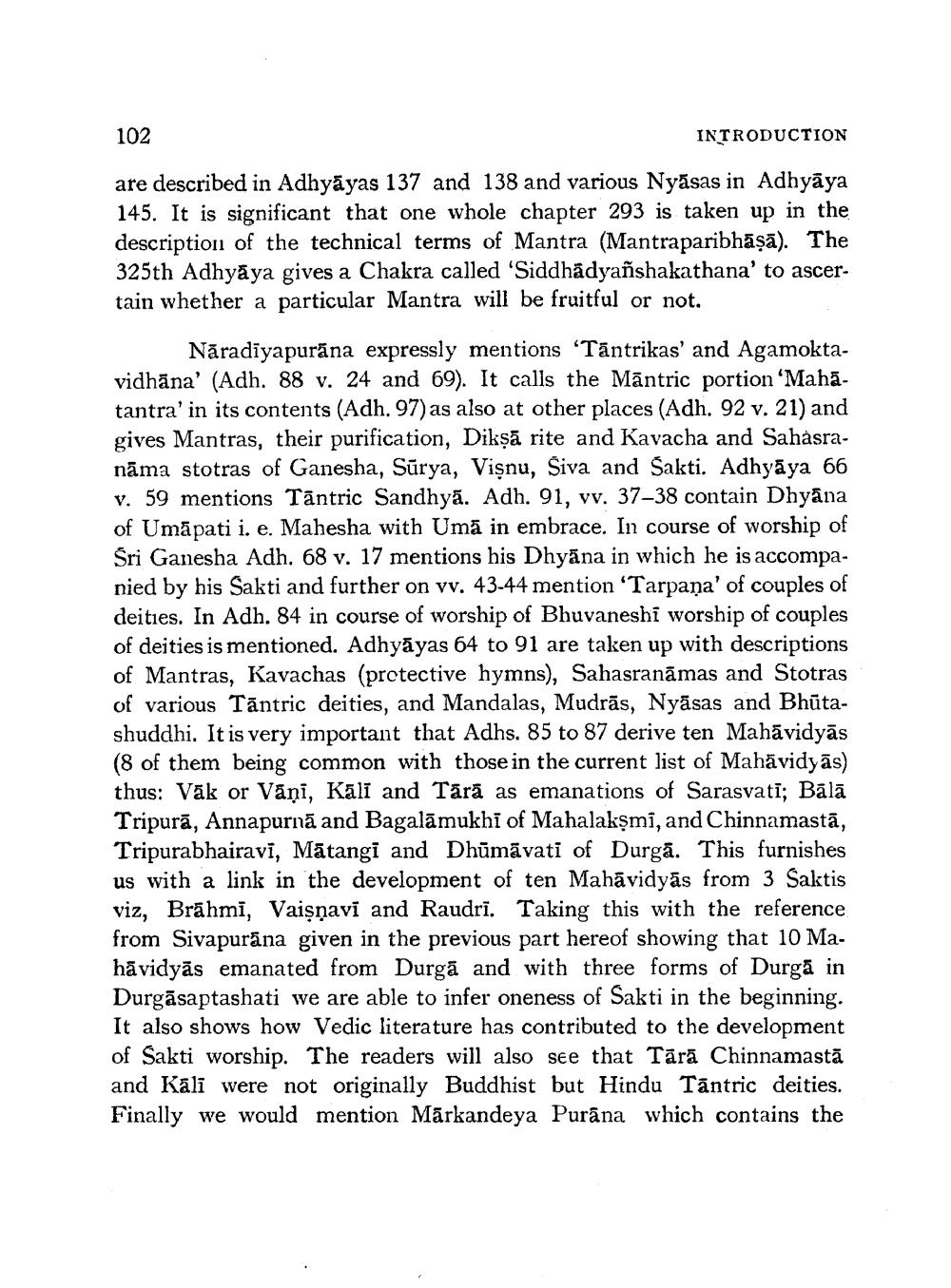________________
102
INTRODUCTION
are described in Adhyāyas 137 and 138 and various Nyāsas in Adhyāya 145. It is significant that one whole chapter 293 is taken up in the description of the technical terms of Mantra (Mantraparibhāşā). The 325th Adhyāya gives a Chakra called 'Siddhädyañshakathana' to ascertain whether a particular Mantra will be fruitful or not.
Náradīyapurāna expressly mentions 'Tāntrikas' and Agamoktavidhāna' (Adh. 88 v. 24 and 69). It calls the Māntric portion ‘Mahā. tantra' in its contents (Adh. 97) as also at other places (Adh. 92 v. 21) and gives Mantras, their purification, Dikṣā rite and Kavacha and Sahasranāma stotras of Ganesha, Sūrya, Vişnu, Siva and Sakti. Adhyāya 66 v. 59 mentions Tāntric Sandhyā. Adh. 91, vv. 37-38 contain Dhyana of Umāpati i. e. Mahesha with Umā in embrace. In course of worship of Sri Ganesha Adh. 68 v. 17 mentions his Dhyāna in which he is accompanied by his Sakti and further on vv. 43-44 mention 'Tarpana' of couples of deities. In Adh. 84 in course of worship of Bhuvaneshi worship of couples of deities is mentioned. Adhyāyas 64 to 91 are taken up with desc of Mantras, Kavachas (protective hymns), Sahasranāmas and Stotras of various Tāntric deities, and Mandalas, Mudrās, Nyāsas and Bhūtashuddhi. It is very important that Adhs. 85 to 87 derive ten Mahāvidyās (8 of them being common with those in the current list of Mahāvidyās) thus: Vāk or Vāņi, Kālī and Tārā as emanations of Sarasvati; Bālā Tripurā, Annapurnā and Bagalāmukhi of Mahalakşmi, and Chinnamastā. Tripurabhairavi, Matangi and Dhūmāvati of Durgā. This furnishes us with a link in the development of ten Mahāvidyās from 3 Saktis viz, Brāhmi, Vaişņavi and Raudrī. Taking this with the reference from Sivapurāna given in the previous part hereof showing that 10 Mahāvidyās emanated from Durgā and with three forms of Durgā in Durgāsaptashati we are able to infer oneness of Sakti in the beginning. It also shows how Vedic literature has contributed to the development of Sakti worship. The readers will also see that Tārā Chinna and Kali were not originally Buddhist but Hindu Tantric deities. Finally we would mention Mārkandeya Purana which contains the




